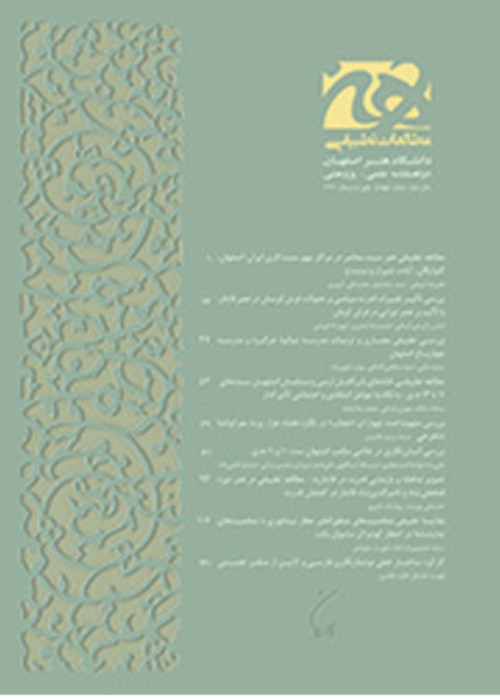A Comparative Study of Motives and Decoration of Iranian Safavid and Indian Mongolian Astrolabes (case study: Adler Planetarium and Astronomy Museum, Chicago)
Iranian and Indian Art in Safavid period has a lot of attachments to each other that its effects are visible in abundance of decorations. In that period of time, astrolabe-making especially in Iran and India went a new way and delicate and prolific decorations covered the entire space of the astrolabes. As regards to that the astrolabe has been studied more scientifically regardless of its visual features. The main purpose of this research is checking motifs and decorations of Iran and India’s astrolabes which made in 10-12 century AH (16-18 AD) and the effect of the Safavid astrologers on Mongolian astrolabes. This research in a descriptive-analytical method studies Adler Planetarium and Astronomy Museum astrolabes to answer these questions: What is the type of motifs and decorations of Iranian Safavid and Indian Mongolian Astrolabes and what are the similarities and differences between them? What is the effect of the Safavid astrologers on Mongolian astrolabes? There are 13 Safavid astrolabes and 8 Mongolian astrolabes in Adler Museum which has been studied in this article. Significant feature of these astrolabes is delicate motifs and ornaments which distinguishes them from other astrolabes. By studying and analyzing motifs, decorations and shapes of samples, similarities and differences have been identified. Safavid Astrolabes have their own style including: the abundance of Quran verses and Persian poems (specially this poem: Gharaz Naghshist Kaz Ma Bazmanad, «غرض نقشیست کزما بازماند»), pattern of motifs, high elegance of the rete’s cutting, richly decorated alidades. Indian astrolabes also with various thrones in terms of dimensions and technique, sighting tubes attached to their alidade and additional bows in rete, have a different style. With all of this, common motifs and decorations in terms of content, type and mode of construction, also a lot of similarities between these two groups, including: triangular thrones, using Plant motifs (Eslimi & Khatayi), Nastaliq calligraphy and delicate cutting in different parts of astrolabes, clearly represent their impact on each other.
- حق عضویت دریافتی صرف حمایت از نشریات عضو و نگهداری، تکمیل و توسعه مگیران میشود.
- پرداخت حق اشتراک و دانلود مقالات اجازه بازنشر آن در سایر رسانههای چاپی و دیجیتال را به کاربر نمیدهد.


